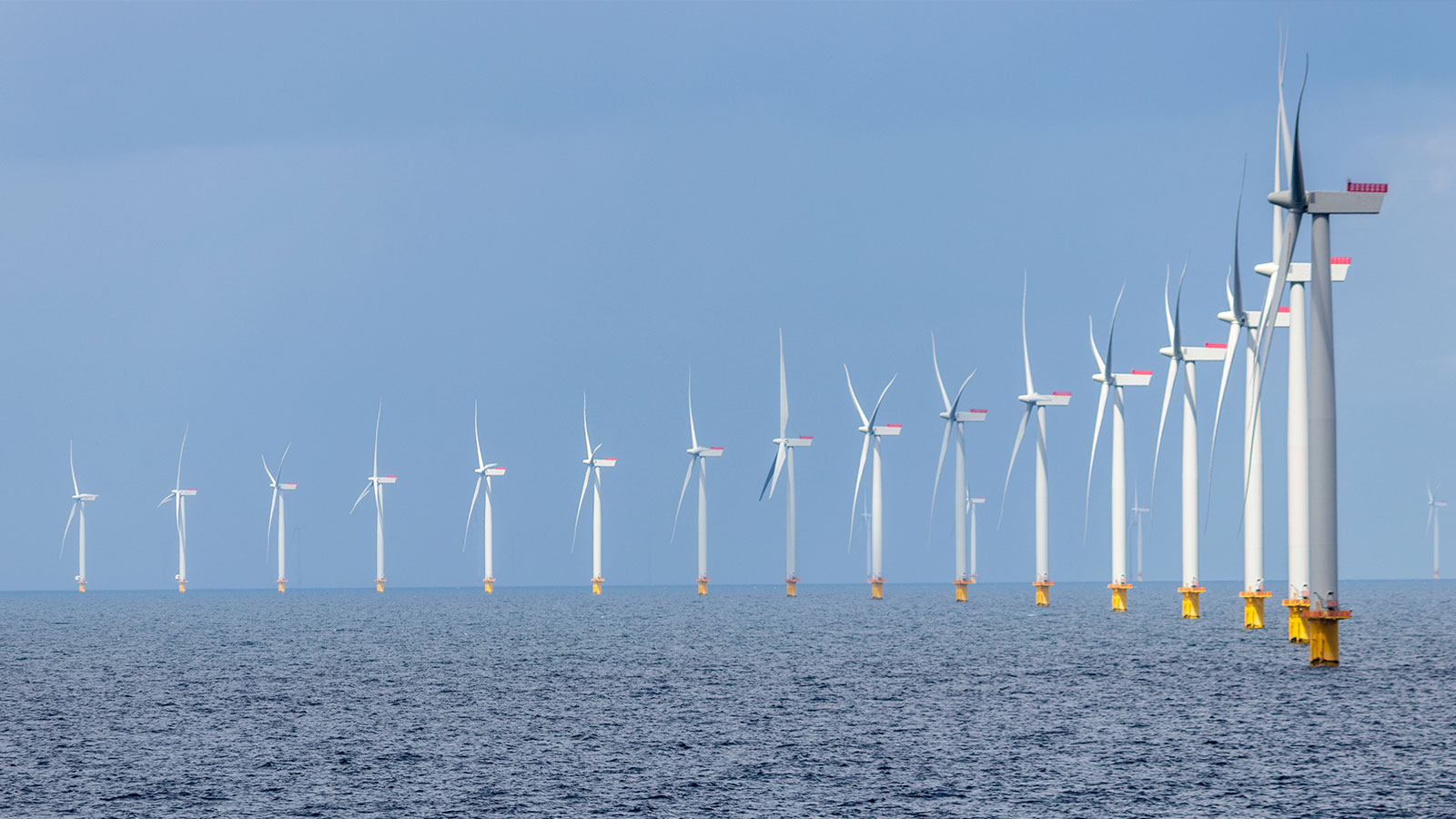Asia-Pacific has overtaken Europe as the global leader of offshore wind, with the region now accounting for 52.9% of global offshore wind capacity.
That’s according to the latest report from the Global Wind Energy Council, which showcased a recent building boom of offshore wind in the Asia-Pacific region, led by China. In fact, 57.6% of all recent offshore wind projects globally were installed in waters off the Chinese mainland, dwarfing the UK, which accounted for just 13.4%.
China has been rapidly developing its offshore wind capacity in recent years, with the country installing 16.9 GW of capacity in 2021 and a further 5 GW in 2022. In comparison, the whole of Europe installed just 5.77 GW over the same two-year period.
Despite falling to second place, Europe’s offshore wind capacity is unlikely to be overtaken by the rest of the world just yet. In fact, Europe and the Asia-Pacific region account for 99.9% of global offshore wind capacity – with the rest of the world accounting for just 0.1%.
Europe’s fightback to reclaim its offshore wind lead to face significant hurdles
There are big plans on the horizon for the development of Europe’s offshore wind capacity. Data from RenewableUK shows the UK alone has a pipeline of offshore wind projects just shy of 100 GW, which is more than the current global capacity of 64.3GW.
In fact, Europe as a whole is expected to surpass the Asia-Pacific region in terms of annual installations from 2030. The pipeline for Europe estimates that 26.4 GW of offshore wind will be installed in 2030 vs nearly 22 GW in Asia-Pacific.
However, despite big plans in Europe, the recent dominance of China and the Asia-Pacific region comes down to two reasons – global supply chain disruptions and rampant inflation. Russia’s invasion of Ukraine has increased the costs of everything from turbines to labour and financing, which has led to some offshore wind projects being cancelled as a result of no longer being financially viable.
This risk even extends to megaprojects, such as Hornsea Three, which is being constructed by Orsted. Due to increased costs, the company asked the UK Government for assistance or warned that it would not be able to complete the project. That warning ended up being ignored by the UK Government, with Orsted ultimately deciding to push forward regardless.
However, others have warned that the windfall tax on renewable energy generators could also impact investment in the UK. This was recently discussed at Powered On Live 2023.
More offshore wind needs to be built
The International Energy Agency and the International Renewable Energy Agency have both previously warned that the world would need to achieve 2,000 GW of installed capacity by 2050 in order to hit net zero emission goals and limit the impact of climate change. However, with just 380 GW of new offshore wind capacity due to come online by 2032, it’s clear there’s more work to be done.
“Governments and industry will need to face head-on the challenges the sector faces around supply chain, permitting and policy in order to build future-proof markets. By solving these challenges we can build a strong, resilient global offshore wind industry,” noted Ben Backwell, CEO of the Global Wind Energy Council.
Additionally the rest of the world will need to play catch up with Europe and China, namely North America. The US has been consistently slow in developing offshore wind, with just 42 MW of capacity currently in operation. Thankfully, things are set to improve in the future, with over 50 GW in the pipeline.
New Zealand could also become a big player in offshore wind in the future, with a technical potential of 2,252 GW of offshore wind capacity – although the majority of that will only be possible through floating wind. That could give the country the opportunity to oversize its electrical infrastructure and become a new player in exporting clean energy to other markets across the globe.
Canada has the same potential as New Zealand when it comes to powering the world – with the potential of delivering 9.3 TW of offshore wind capacity. That’s many times the global need, although in order for Canada to meet its own net zero ambitions it would need just a fraction of that – 150 GW. Currently it doesn’t have a single offshore wind farm live.
For the UK, not only is around 100 GW already in the pipeline, but it’s estimated that the country will account for 28% of all offshore wind capacity in Europe built between 2022-2023.





